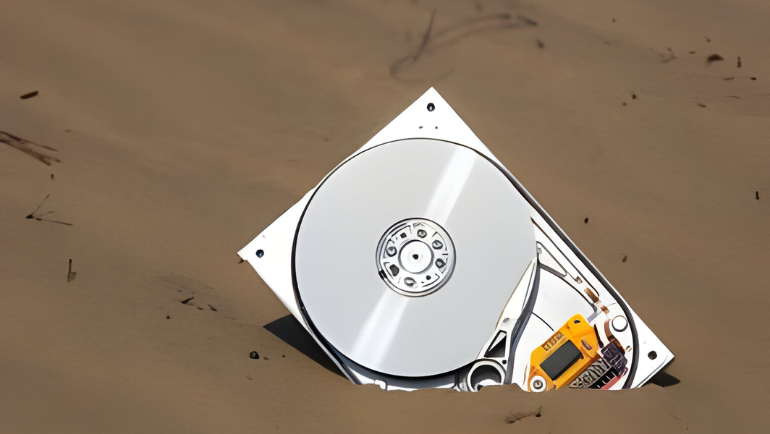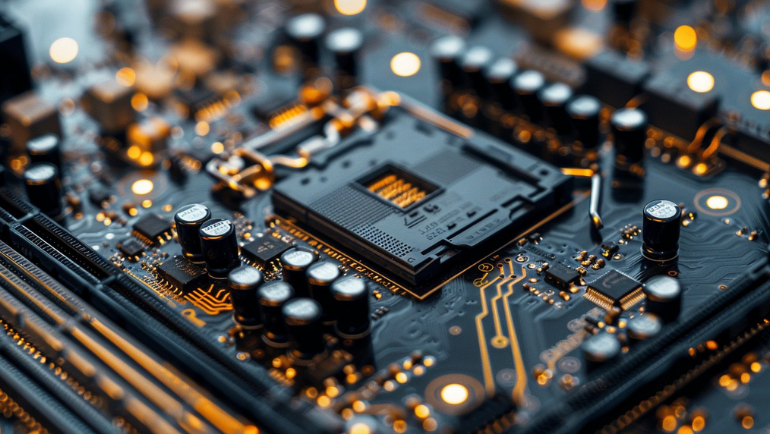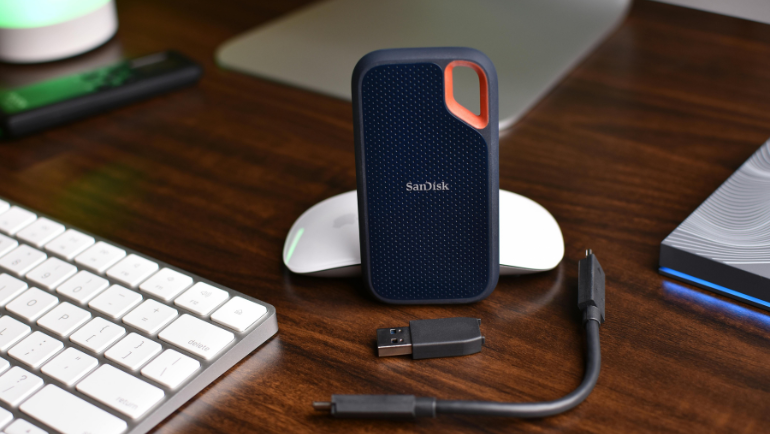
- What is Wear Leveling?
- Wear Leveling Groups
- Working
- Types
- Dynamic vs. Static
- How to Check Wear Leveling
- Factors Affecting Wear Leveling
What is Wear Leveling?
Wear leveling is a process designed to extend the lifespan of storage devices only containing NAND flash chips. All NAND flash memory cells have a limited number of Write/Erase (W/E) cycles before End-of-Life (EoL). wear leveling addresses this by evenly distributing data during write/erase cycles among cell blocks. Flash controllers manage wear leveling via an algorithm to determine the block location during write/erase cycles. Wear leveling technology utilizes each flash block, helping enterprises and businesses to extend SSDs lifespan cost-effectively
Wear Leveling Groups
In NAND flash storage devices, data is broken into groups (zones) based on data type: Boot area, system, user application, and media files. Each group is wear leveled within their respective zones, independently of others, avoiding concentrated wear in a particular region. Since all the data is similar, flash blocks within these groups can be leveled together. However, the data groups in e-MMC and UFS3 devices may differ to offer higher reliability.
How Does Wear Leveling Work?
Flash controllers specify the erase count of each block and direct new data toward the lowest erase count. Without wear leveling blocks in NAND flash chips data will be overwritten, until no further data can be written. To avoid this, the cell receives the same number of writes and as soon as one block write count increases, the data is moved toward the lower writes block.
Mechanism of Wear Leveling in Storage Devices
Wear leveling is first implemented in the flash translation layer (FTL) as an intermediary between the file system and the storage device. FTL provides the mapping rules for logical and physical addressing. Inside the NAND flash storage device, are blocks divided into three portions: Data Block, Free Block, and System Block. The Free block is assigned for wear leveling and bad block management, while the system block maps the table, cache, and other functions. It’s important to note that there are two subsets of data in NAND flash devices: static and dynamic for which different wear leveling algorithms are applied.
Types of Wear Leveling Algorithms
Dynamic, Static, and Global are three different types of wear leveling techniques commonly used in storage devices.
- Static: Ensures all in-use and empty blocks wear out evenly over time. It takes a single flash chip unit during erase count calculation, moving data from lower erase count blocks to other blocks.
- Dynamic: Utilizes only free space during writing operations, moving writes to the lowest erase count block.
- Global: Extends static operation to the entire device, ensuring write operation in lower erase count blocks throughout the groups.
Dynamic vs. Static Wear Leveling
Both methods of wear leveling are used in storage devices. Some common differences between the two are stated below.
| Features | Dynamic | Static |
| Definition | Redistributes write/erase cycles among active blocks frequently changing data. | Distributes write/erase cycles evenly across all blocks, including those with static data. |
| Focus | Active blocks with dynamic data | All blocks, including static data and dynamic data. |
| Mechanism | Writes new data to blocks with the fewest erase cycles. | Moves static data from blocks with low erase counts to blocks with higher erase counts. |
| Implementation | Simple to implement | Harder to implement |
| Lifespan Extension | Moderate as it only prioritizes dynamic data | High as it prioritizes both static and dynamic data. |
| Performance Impact | Reduces performance slightly | Reduces performance more than Dynamic wear leveling |
| Best Use Case | Ideal for environments with frequently changing data, such as logs, caches, and temporary files. | Suitable for systems with a mix of static and dynamic data, such as operating systems, firmware, and user data. |
Why is Wear Leveling Important?

Wear leveling increases your storage device’s lifespan, it also manages erase and write operations to prevent read disturbance. Let’s briefly look into the importance of wear leveling in storage devices.
- Enhances Reliability: Distributes data across data blocks evenly among NAND flash cell types such as SLC, MLC, TLC, and QLC. This allows your drive to optimize data storage effectively, increasing its lifespan.
- Improves Performance: Minimizes the required number of erases to reduce writing time in storage devices, speeding up drive writing operations and performance.
- Extends Lifespan: Stops overwriting on the used block many times, reducing the likelihood of data corruption and loss.
Wear Leveling in NAND Flash Storage Devices
Many NAND flash storage devices including Solid State Drives (SSDs), Universal Flash Drives (USBs), and more employ wear leveling to increase performance and lifespan. The underlying concept is similar in all devices as mentioned earlier. Static and Dynamic wear leveling techniques distribute data evenly into blocks throughout the device, allowing better performance, and lifespan. Here are some NAND flash storage devices employing wear leveling techniques.
- SSD
- SD Card
- CompactFlash Card
- USB Flash Drive
Popular Wear Leveling Compatible Devices for Sale Computing Worlds offers a wide range of new, used, and refurbished storage devices for sale at competitive prices.
You can request a free bulk quote for the required number of products.
Factors Affecting Wear Leveling
Many factors are involved in effective wear leveling in storage devices, such as drive high temperature, updated firmware, and NAND cell types. Other important factors are mentioned below.
- Write Amplification: Increases the number of writes/erase cycles, accelerating wear on the memory cells.
- Data Access Patterns: Random write operation and frequent updates lead to uneven wear in certain data blocks.
- Over-provisioning: Leaving extra memory space (over-provisioning) allows the wearing leveling algorithm to work more efficiently in distributing data evenly.
- Garbage Collection: Erases invalid data blocks, increasing the risk of write amplification and uneven wear
- Block Erase Count: higher erase count blocks wear out faster, requiring intensive wear leveling operations
- Host System Usage: Host and file systems affect write operations, influencing wear leveling performance.
- User Workload: Read or write-intensive heavy workloads can cause strain on the storage drives, wearing faster
How to Check Wear Levels in Windows and MAC Devices
To check the wear levels of your storage devices in Windows, you can use different manufacturer-specific tools such as Samsung Magician, and Intel Toolbox among others. Enterprises also use third-party tools like CystalDisk info or SSD life to know their drive’s total write/erase cycle. Checking wear levels in macOS is a little different. It also uses software, but it is usually built-in. Follow the instructions below to check your storage drive wear levels.
- Step 1: Click on “Apple Logo” in the top-left corner
- Step 2: In the drop-down menu, select the “About this MAC” option
- Step 3: Click on “System Report”
- Step 4: Under the “Hardware” section, select “Storage”
- Step 5: Select your SSD to check its complete detail including SSD wear levels.
You can also use third-party apps such as DriveDX and Smart Utility, but it’s not recommended.
Future of Wear Leveling

All businesses incorporate storage devices with wear-leveling technology to optimize the life of their storage devices. Wear leveling is considered one of the most important developments in NOR and NAND storage devices and will continue to grow even further. However, it’s important to note that wear leveling requires another algorithm such as garbage collection or TRIM commands to work effectively in devices. The growing advancements in 3D NAND technology will require more adaptable wear-leveling algorithms to manage the complexities. Today, many next-generation memory technologies are emerging, such as Phase Change Memory (PCM), and Resistive RAM (ReRAM) to offer different endurance characteristics with wear leveling.
Frequently Ask Questions
Are Wear Leveling Algorithms Sufficient for Improving NAND Memory Endurance?
SSD Wear level increases endurance, but other technologies such as garbage collection and TRIM commands are also important for the drive’s overall stability.
Do SD Cards have Wear Leveling?
Yes, like all-flash storage devices, SD cards also have wear leveling to optimize their lifespan.
Do all storage Devices have Wear Leveling?
No, not all storage devices have wear leveling only those which consist of NAND flash memory chips.
Wear leveling is crucial for any storage device containing NAND chips as it improves its overall efficiency and lifespan. This marks the end of wear leveling. Enterprises also opt for RAID integration in their storage devices via RAID controllers for shared speed and storage. However, many interfaces SAS and NVMe may be compatible with it. Therefore, consider all the facts about SSDs or other storage devices before RAID implementation. On the other hand, you can use a combination of DRAM and NAND memories in PCs and Servers to optimize their performance without RAID.
Stay connected to the Computing Worlds blog to learn more about storage devices.






